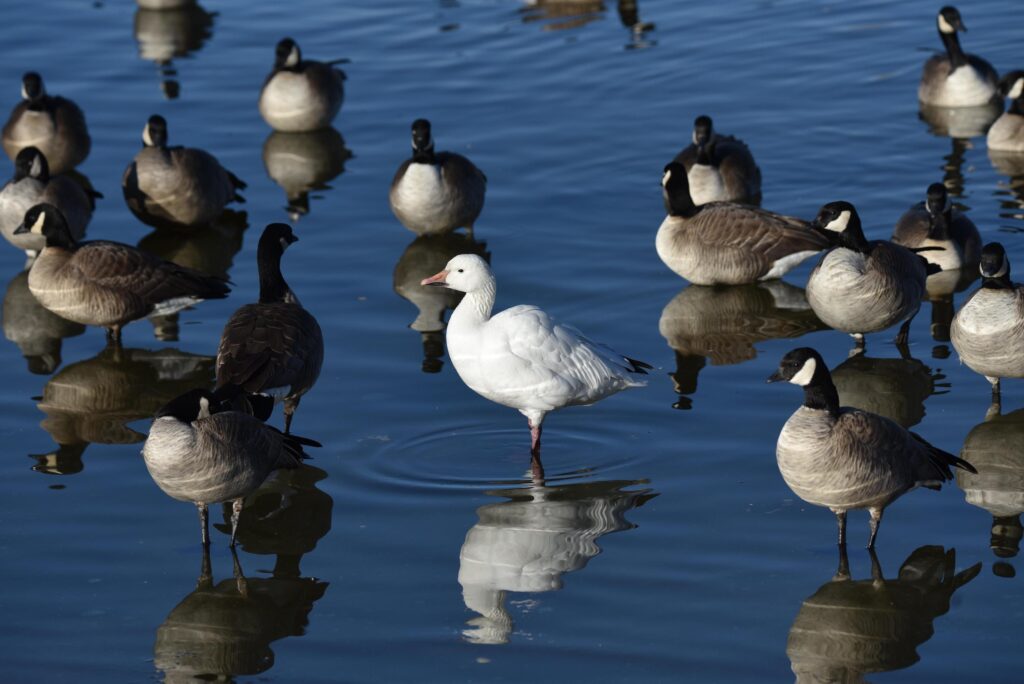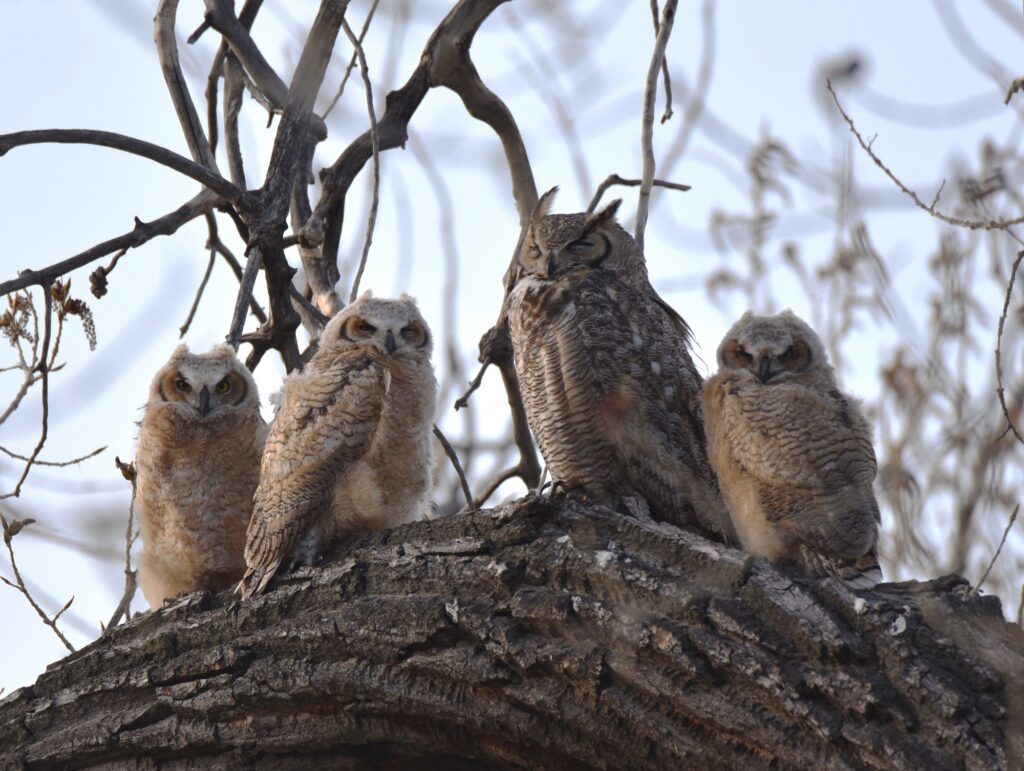By London Lyle
On Jan. 1, the annual Audubon Christmas Bird count will occur for the 123rd year.
Participants will meet in the parking lot just north of the City of Cuernavaca Park at 8:30 a.m. and progress along the South Platte River to Riverside Cemetery. First, they will walk through Commons Park to Confluence Park in Cherry Creek, then drive to Globeville Landing Park. The plan is to stop at the Kind Coffee Shop on 15th Street around 9:45 a.m. for refreshments and then continue to Carpio Sanguinette Park. Weather permitting, the birders will then make their way to Riverside Cemetery. “All but the most stalwart birders will be done in by 1:00 p.m.,” according to a flyer.
There will be a celebratory chili supper to cap off the adventurous day, a longstanding tradition that has been on hold for the past couple years due to the pandemic. Birders will be able to compare notes and make an overall tally, which will be entered into the National Audubon Society’s database.
In years past, the highest bird count in the Middle South Platte consisted of 29 different species and over 2,000 individual birds. Out of 14 total segments, 87 species and 30,000 birds were counted.
Many experienced birders can be found in Bluff Lake, often called the “bird bed and breakfast.” These birders are typically able to distinguish some of the harder-to-identify birds. These include various species of sparrows and other birds that don’t sit still long enough for the average birder to identify.
According to Casey Davenhill, who has been running the bird count for the past several years, birders of all levels of experience, not just the “bird nerds,” are welcome to participate. Denver Audubon’s section of the count is from the confluence of Cherry Creek and the South Platte River out to the Denver-Adams county line to the Riverside Cemetery.

Some of the bird species Davenhill expects to see are raptors, kestrel and Cooper hawks, water ouzels (also known as American dippers) and even bald eagles. Dippers are some of the most exciting birds to watch this time of year. About the size of a starling and typically found in the mountains, water ouzels’ habitats are right along the waterways, and they feed underwater. The dippers will perch on a rock until they spot their meal, and then they will hop down, dive underwater and pop back up. “They’re really cute,” Davenhill remarked. Bald eagles are often spotted around Cherry Creek Reservoir and around the Rocky Mountain Arsenal.

“The beauty of birding near the river in the winter is the open water. What we see a lot of are waterfowl, including mergansers, goldeneyes and bufflehead ducks. Winter birders tend to want to check out the open water and see what birds they find there,” Davenhill said.
As for seasonal bird tips this time of year, Davenhill recommends investing in a heated bird bath outside your residence. Birds can usually find food on their own, and bird feeders run the risk of attracting other hungry wildlife. But during the winter, birds love having access to non-frozen water. Installing a heated birdbath is almost guaranteed to attract feathered friends. While buying a brand-new heated bird bath can be costly, there are affordable alternatives. Heated inserts can be purchased for existing bird baths, or a bowl of warm water can even be placed outside every morning.
Davenhill said the trail is fun for everyone to enjoy, not just birders. Birds can be seen year-round from the well-maintained parks along the trail and throughout the length of the river due to their proximity to rich vegetation and water. Fancy binoculars and a background in birding aren’t necessary to spot them. But for beginner birders, the Audubon bird count can be a great place to start.
“We’re casual. We try not to freeze to death and just try to have a good time,” Davenhill said.

Be the first to comment